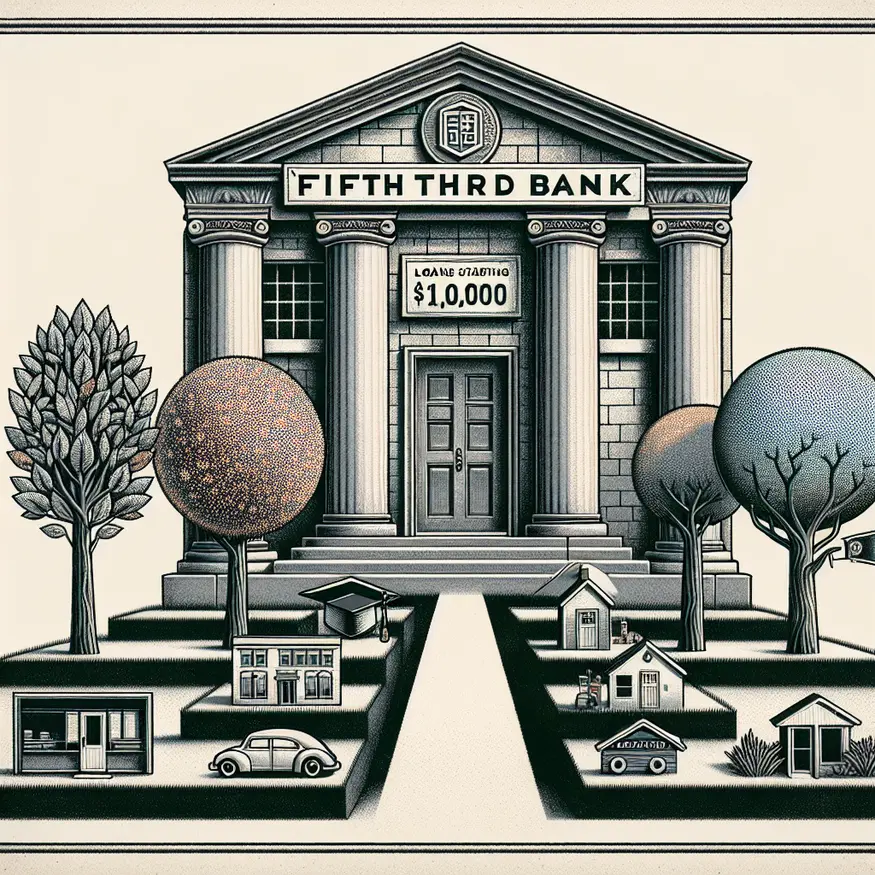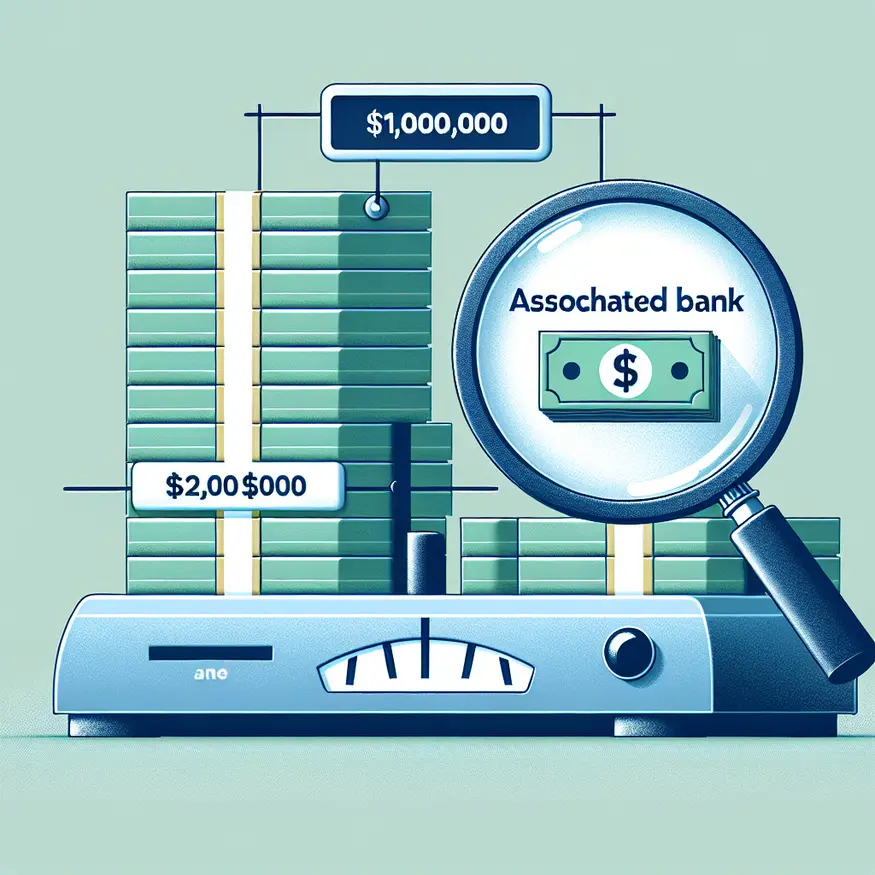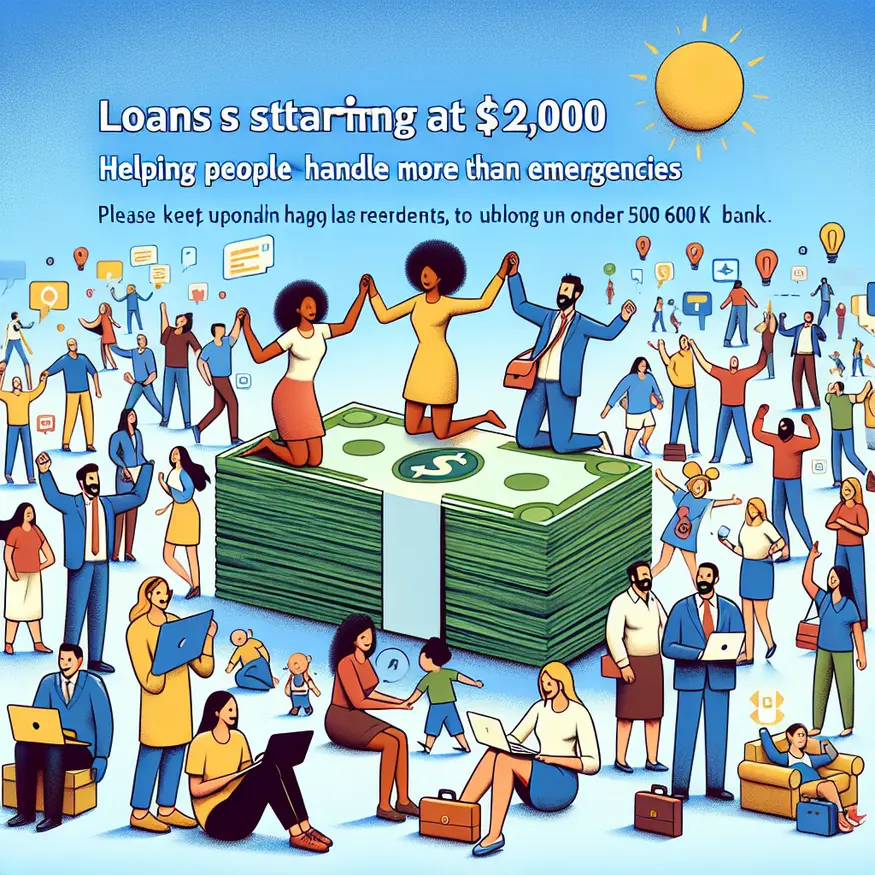Borrow Starting at $1,500 with Truist Bank — Learn What’s Available Now
Explore flexible borrowing options starting at $1,500 with Truist Bank to meet your financial needs today.
Find out how Truist Bank can help you secure a loan that fits your budget and goals.
Financing options can sometimes feel overwhelming, especially when you’re unsure about loan approval processes. Many people face anxiety wondering if they will qualify or if the terms will fit their budgets. It’s normal to feel this way, but understanding your choices can make the journey simpler and stress-free.
Let’s dive deeper into this topic with a clear and straightforward approach.
- Loan fees
- Interest rates
- Eligibility criteria
Getting the financing option that suits you requires a well-informed approach to avoid common pitfalls. This article will provide clarity, tips, and shortcuts to help you confidently navigate loan approval. You’ll learn how fees work, what interest rates really mean, and what criteria you should meet to increase your chances of approval.
Loan fees
Loan fees can sometimes surprise borrowers when they are not clearly understood beforehand. These fees can vary widely, depending on the lender and the loan type. It’s crucial to identify all potential fees involved before applying so you aren’t caught off guard.
Some common loan fees include application fees, origination fees, late payment fees, and prepayment penalties. Application fees cover the cost of processing your request. Origination fees are charged for the creation of the loan and often range between 1% and 6% of the loan amount.
Late payment fees are added when you miss your monthly due date, which can negatively affect your credit score and make your loan more expensive. Prepayment penalties, on the other hand, may be charged if you pay off your loan early, so verify if this applies before committing.
To manage loan fees wisely, always ask your lender for a detailed list of any costs associated with your loan. This proactive step helps compare different offers accurately. Sometimes, lenders offer loans with no application or origination fees, which could save you hundreds of dollars.
Keep in mind that lower fees don’t always mean the best deal if interest rates are high. Therefore, you should balance fees against interest costs and repayment terms to find the best financing option for your financial situation.
For example, if you plan to borrow $10,000 with a 3% origination fee, that means you would pay $300 upfront just to get the loan. Multiply this by the number of fees and compare across lenders to identify your best option.
Interest rates
Interest rates are the cost of borrowing money and usually represent the largest expense for a loan. These rates can be fixed or variable and impact how much you ultimately repay. Understanding how interest rates work will empower you to make smarter financing decisions.
Fixed interest rates stay the same throughout the loan term, providing predictable monthly payments. This option is ideal if you want budget stability. Variable rates, however, can change based on market conditions, which might start lower but could increase later, affecting your monthly payments.
The interest rate you qualify for depends on several factors, including your credit score, income, debt-to-income ratio, and loan amount. Typically, borrowers with higher credit scores and steady income receive lower rates.
It’s wise to shop around as interest rates can vary significantly between lenders, even for similar loan amounts and terms. Comparing annual percentage rates (APR) rather than just the nominal rate will give you a more comprehensive view of the loan’s cost.
Consider this example: a loan of $5,000 at 6% interest compared to 12% interest can result in paying hundreds of dollars more over the loan’s life. Don’t rush your loan application without checking options that might save you money in the long run.
Also, consider if the lender offers any discounts, such as reduced rates for automatic payments. These benefits can trim your costs and speed up loan approval.
Eligibility criteria
Meeting eligibility criteria is essential to obtaining loan approval. Each lender sets specific requirements based on their risk assessment models. Knowing these criteria in advance helps you prepare and increases your chances of a smooth approval.
Common eligibility requirements include a minimum credit score, stable employment history, proof of income, and manageable debt levels. Some lenders require a certain length of time at your current job or proof of residency.
For personal loans, a credit score of 600 or higher is usually expected, but this varies widely. If your credit is lower, you might still qualify but at higher interest rates or with additional guarantees like a co-signer.
Additionally, some lenders check your debt-to-income ratio (DTI), which compares your monthly debt obligations to your pre-tax income. A DTI below 40% is often seen as favorable. You can improve your DTI by paying down existing debts before applying.
Gathering necessary documents such as tax returns, pay stubs, and bank statements ahead of time shortens the loan approval process. Being organized shows lenders you’re a serious applicant.
Knowing eligibility criteria also enables you to explore special lending programs for specific groups like veterans, students, or small business owners. These programs often have unique benefits that regular loans lack.
Remember, if you are rejected, reasons provided can guide you on what to improve for next time—whether that’s boosting your credit score or reducing existing debt.
Check Personal Loan Options with Wells Fargo
Choosing the right financing option for your needs
After understanding fees, interest rates, and eligibility, it’s time to pick the loan that fits your financial goals. Not all financing options are created equal; some help with short-term needs, while others provide long-term support.
Start by defining the purpose of your loan. Are you consolidating debts, funding a home project, or covering an emergency? Knowing this clarifies which loan options—secured or unsecured—are best suited.
Secured loans require collateral like a home or car, often offering lower rates but with more risk if you default. Unsecured loans don’t require collateral but usually carry higher interest rates because the risk to lenders is greater.
Compare repayment terms and monthly payment amounts. Some lenders offer flexible payment schedules or skip-payment options during hardships. These features can provide important breathing room if your financial situation changes.
It also helps to read reviews and ask for recommendations. Hearing from others who have navigated similar loans can bring valuable insights and avoid lender traps.
Finally, use online loan calculators to estimate your monthly payments and total cost. This practice makes your budget planning realistic and shows the true impact of different financing options.
Steps to speed up loan approval
Loan approval doesn’t have to be a long and nerve-wracking process. With preparation and understanding, you can accelerate approvals and improve your chances.
1. Check your credit report before applying to correct any errors.
2. Gather all required documents in advance, including ID, proof of income, and bank statements.
3. Choose lenders who are known for fast turnaround times and clear communication.
4. Avoid applying to many lenders at once; multiple inquiries can lower your credit score.
5. Complete your application honestly and thoroughly to reduce delays.
6. Consider prequalification options that don’t affect your credit, giving you a clear idea of your chances.
7. Set automatic payments to satisfy lenders about your repayment reliability.
By following these steps, you reduce the waiting time from weeks to just days in some cases, helping you get the funds you need quicker.
Apply for a Bank of America Personal Loan Today
How to avoid common mistakes when applying for loans
Loan mistakes can cause frustration and rejection. Here are the most frequent errors and how to avoid them:
- Applying without checking your credit score first
- Ignoring the fine print regarding fees and penalties
- Overestimating what you can comfortably repay monthly
- Not comparing multiple lenders and offers
- Failing to disclose complete financial information
- Missing deadlines for submitting required documents
- Assuming preapproval equals final loan approval
To keep your application on track, double-check everything before submission and ask questions if you’re unsure about terms or conditions. Lenders want you to succeed, so use their support services to clarify doubts.
Now that you understand loan fees, interest rates, and eligibility criteria, you’re better equipped to choose the right financing option and navigate loan approval successfully. Remember that preparation is your best tool—know what to expect, organize your documents, and compare options carefully.
Taking these steps thoughtfully will ease anxiety and put you in control of your financial decisions. Ready to explore your options further? Look out for our next articles where we’ll dive into tips for managing loan repayments and improving your credit for future borrowing.
Keep moving forward! Your financial goals are closer than you think.

Need Flexibility? Fifth Third Bank Offers Loans Starting at $1,000 for a Variety of Uses
Looking for ways to borrow money can be stressful and overwhelming, especially when you need quick cash for unexpected expenses or big purchases. Many people face confusion about how to apply for loans and worry about hidden costs that accompany borrowing. If you’ve ever felt uncertain about the loan application process and its impact on […]

From $1,000 to $25,000: Associated Bank Loans You Might Not Know About
Finding the right bank loan can feel overwhelming, especially when you’re juggling bills, unexpected expenses, or planning for the future. Many people struggle with confusing loan offers and unclear terms, leaving them uncertain about which option fits their needs best. If you’re seeking clarity and confidence in choosing a loan, you’re not alone. Let’s dive […]

Santander Loans Starting at $2,000: Helping People Handle More Than Emergencies
When unexpected expenses arise or a financial opportunity knocks, finding the right loan can be both a relief and a challenge. Many people feel overwhelmed by the choices between personal loans and traditional bank loans, unsure of what fits their needs best. Understanding these options can help you take control of your financial future with […]